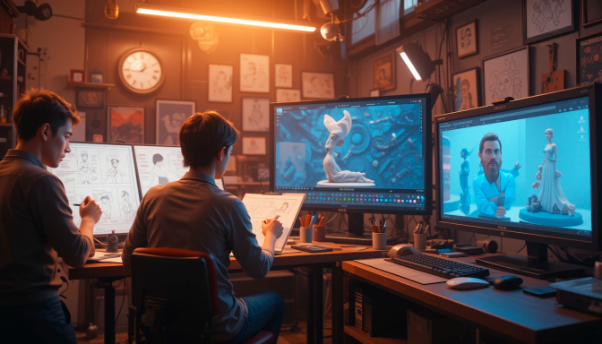
The Ultimate Guide to 3D Character Animation Pipeline: From Concept to Render
Why 3D Character Animation Works for Explainer Videos
How to Make an Explainer Video That Converts
Final Thoughts
The Ultimate Guide to 3D Character Animation Pipeline: From Concept to Render
When exploring how to make an explainer video, many companies are turning to 3D character animation because it combines storytelling, realism, and brand engagement in one package. The 3D animation pipeline spanning from concept to final render ensures that every detail communicates your message clearly, whether you’re a Marketing Director explaining a new product, a pharmaceutical company simplifying clinical data, or a law firm educating clients. This guide breaks down the entire process so you can understand how to make an explainer video that resonates with your audience and achieves measurable results.
Why 3D Character Animation Works for Explainer Videos
If you’re researching how to make an explainer video, 3D character animation stands out because it creates lifelike movement, emotional connections, and memorable storytelling. Unlike static visuals or simple 2D graphics, 3D allows you to:
- Demonstrate complex products (perfect for medical device manufacturers or pharmaceutical companies)
- Humanize abstract services (ideal for lawyers, attorneys, or corporate communications)
- Enhance engagement on digital platforms (for marketing and social media managers)
Step 1: Concept Development
Every effective explainer video begins with a clear concept. At this stage, you’ll define the problem, target audience, and the outcome you want to achieve. Knowing how to make an explainer video means aligning your creative approach with your business goals.
Key actions:
- Identify your core message
- Develop a script with storytelling in mind
- Collaborate with stakeholders (brand managers, training directors, or compliance teams)
Step 2: Storyboarding
Storyboarding visualizes the sequence of events. It’s a roadmap for the animation team and ensures everyone from marketing directors to attorneys approves the flow before production.
Why this matters for how to make an explainer video: it reduces revisions later, saving time and budget.
Step 3: Modeling
In the 3D pipeline, characters and environments are modeled in software to create the foundation of your explainer video. For industries like pharmaceuticals or medical devices, accurate modeling ensures regulatory compliance and credibility.
Step 4: Rigging & Animation
Rigging equips 3D characters with a digital skeleton, while animation brings them to life. This stage is critical for those learning how to make an explainer video that feels authentic and relatable. Characters can:
- Show empathy in a legal explainer video
- Demonstrate medical product usage safely
- Act out training scenarios for corporate learning
Step 5: Texturing & Lighting
Texturing adds realism skin, fabric, metal, or plastic while lighting creates mood and clarity. For marketing directors and corporate communication specialists, this step ensures the brand message is visually consistent and appealing.
Step 6: Rendering
Rendering finalizes the video into high quality frames. Depending on complexity, rendering can take hours or days, but it’s essential for delivering the polished look that audiences expect when consuming professional content.
Step 7: Post Production
In post production, editors add voiceovers, music, motion graphics, and branding elements. If you want to know how to make an explainer video that converts, post production is where emotional resonance and brand authority are cemented.
How to Make an Explainer Video That Converts
By following the 3D character animation pipeline, you’ll not only understand how to make an explainer video, but also how to maximize its business impact:
- Start with a clear brand goal
- Keep messaging simple and audience focused
- Use professional animation studios familiar with corporate industries
- Leverage 3D to simplify complexity and elevate brand authority
- Distribute strategically on websites, social media, and presentations
Final Thoughts
Understanding the 3D character animation pipeline is essential if you’re serious about learning how to make an explainer video that connects with your audience. From law firms to pharmaceutical companies, from training specialists to corporate communication directors, the pipeline ensures your message is clear, engaging, and impactful. Whether you’re showcasing a complex medical device or simplifying legal processes, 3D animation can transform your brand storytelling into a powerful visual asset.
